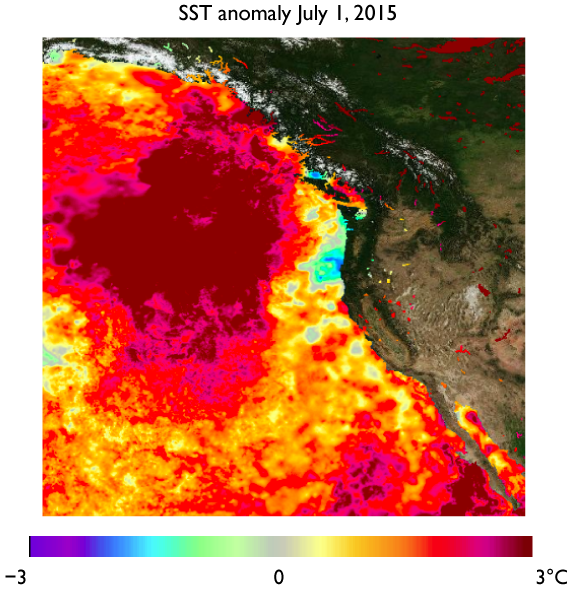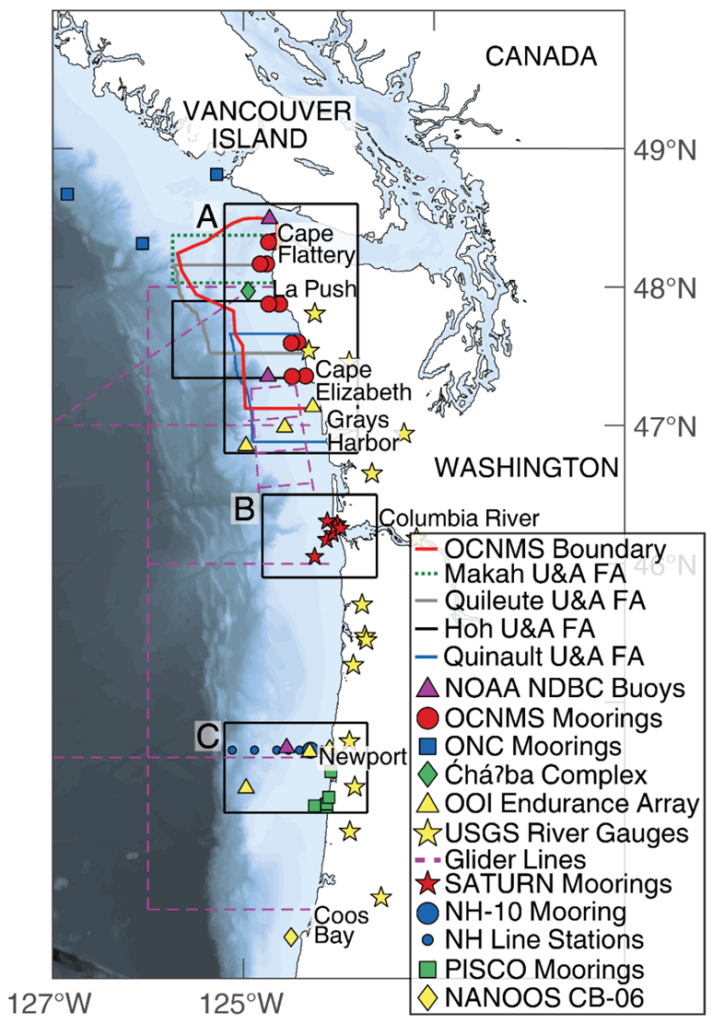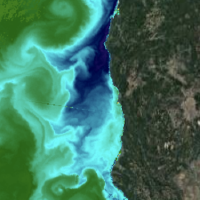Current Projects

Marine heat waves in midlatitude regions
(2018–2023) This project is funded by the NASA Ocean Vector Winds Science Team. Using satellite swath ocean vector winds and reanalysis products, we are investigating how regional wind patterns modify large-scale marine heat waves.

Water temperature in estuaries
(2020–2024) This project is funded by the National Science Foundation Physical Oceanography program. We are using existing long time series observations from multiple estuaries across the United States to understand the dynamics that control estuarine water temperatures on time scales of days to years.

Altimetric studies of the “Oceanic Pathways” in the eastern Pacific Ocean
(2021–2025) This project is funded by NASA through the Ocean Surface Topography Science Team. We are using satellite measurements of sea-surface height and nested high-resolution numerical models to better understand transport pathways for anomalous water masses and passive planktonic organisms along the northeast Pacific margin from Mexico to Canada, especially into and out of the California Current System. We are characterizing and quantifying the subseasonal, seasonal, and interannual variability of the transport pathways, including during El Niño cycles and marine heat waves.

Variability of subsurface water masses in the Olympic Coast National Marine Sanctuary
(2022–2025) This project is funded by NOAA’s Climate Program Office. Using >20 years of mooring data in and around Olympic Coast National Marine Sanctuary (OCNMS) and farther south off Washington and Oregon States, we are producing updated seasonal climatologies for subsurface physical oceanographic conditions and characterizing the anomalies and dynamics associated with extreme events in the northern California Current System.
Former Projects (at OSU)

Climate variability in the northern California Current
(2017–2021) This project is funded by the NOAA Climate Observations and Monitoring Program. We are using long-term physical and ecological ocean observations from the Newport Hydrographic Line to develop new indices of climate variability and to better understand physical-biological interactions on the shelf.
